This article was medically reviewed by Troy A. Miles, MD. Dr. Miles is an Orthopedic Surgeon specializing in Adult Joint Reconstruction in California. He received his MD from the Albert Einstein College of Medicine in 2010, followed by a residency at the Oregon Health & Science University and fellowship at the University of California, Davis. He is a Diplomat of the American Board of Orthopaedic Surgery and is a member of the American Association of Hip and Knee Surgeons, American Orthopaedic Association, American Association of Orthopaedic Surgery, and the North Pacific Orthopaedic Society.
There are 9 references cited in this article, which can be found at the bottom of the page.
wikiHow marks an article as reader-approved once it receives enough positive feedback. In this case, several readers have written to tell us that this article was helpful to them, earning it our reader-approved status.
This article has been viewed 430,462 times.
Shin splints are characterized by pain along the side or front of the shin.[1] You can get shin splints for many reasons, including if you have flat feet, improper footwear, exercise too intensely, or have poor body alignment. Although treatment of shin splints is typically multi-faceted, stretching is a great place to start and will relieve symptoms in mild to moderate cases.[2] Just follow a few simple steps to do stretches that will alleviate your shin splints and help you prevent them in the future.
Steps
Taking Care of Yourself Before You Stretch
-
1Cool down before you stretch. You should never go straight into stretches right after you get injured. Whenever you feel like you have shin splints, you first need to rest and let the muscles cool down before you begin to stretch. You don't want to overdo it and end up hurting yourself more.[3]
- If you think your shin splints might be due to your footwear, you should change your shoes before beginning the stretches. You don't want to hurt your shins more than they already are.
-
2Ice your shins. Starting the day you get shin splints, you need to ice your shins. The coolness of the ice will help decrease the inflammation of the muscles in your shins and help alleviate the pain. You should ice them four to six times a day for 15 minutes at a time.
- Make sure you wrap any ice pack with a cloth or towel. Applying ice directly to your skin can cause frostbite.[4]
Advertisement -
3Take a break from high impact exercise. You need to rest your shins for a few days after your shin splints. You should avoid high impact exercises such as running or jogging. Try exercises such as swimming, spinning, or biking instead. They put much less strain on your shins and will allow them time to heal.
- Your stretches can be done at any point after you get shin splints. They are considered low impact exercises.[5]
-
4Wear proper shoes. One of the major causes of shin splints is improper shoes. You should replace your shoes every three to six months or every 500 miles. You also need to make sure you have shoes that are right for the shape of your feet and the exercises you perform in them.
- For example, you should get shoes specifically made for running if you are a runner. They provide different kinds of support to help you with running.[6]
Stretching to Alleviate Shin Splints
-
1Do the toe-up stretch. Stand about a foot from the wall with your feet flat on the floor. Slowly lean back, placing your back and butt against the wall. From this position, lift your toes off the ground toward the ceiling. Hold this for 5 seconds. Repeat 10–15 times.
- You can increase your holding time the more you do it. This will help increase the endurance and strength of your muscles.
- This stretch helps loosen and strengthen the front portion of your lower leg.
- If you are not using a wall, make sure the surface you lean against is sturdy.[7]
-
2Perform a calf stretch for your upper calf. To stretch the bulging top area of your calf, stand facing the wall with one foot shoulder width in front of the other. Keep your back leg straight and bend your front knee. Push against the wall until you feel the stretch through the calf in your back leg. Hold for 30 seconds. Change legs, repeating the same exercise on the other side. Do three sets in total.
- This will help loosen your calf muscle and relieve the pain in your shin.[8]
-
3Try a calf stretch for your lower calf. To stretch the smaller, lower muscle in your calf, stand with one foot in front of the other. Place your hands on the wall for balance. Bend both knees slightly and lean back into the stretch. Hold for 30 seconds. Slowly come back up and change legs, performing the stretch again. Do three sets total.
- This will relax the top muscle and focus the stretch on the lower muscle.
- This stretch helps decrease the pain in your shins.[9]
-
4Try the seated shin stretch. Kneel down on the floor. Gently sit back, sitting on your heels. Gently push down to stretch the muscles in the front of your legs. Hold the stretch for 30 seconds. Lean up, releasing the stretch in your muscles. Repeat three times.
- You can do this one leg at a time if you are uncomfortable doing it with both at the same time.
- Make sure you only stretch as far as you can. You don't want to overextend your muscles and hurt yourself.[10]
-
5Perform a standing toe-up Achilles stretch. Stand with your feet shoulder width apart near a step or raised surface. Lift your foot and place the ball of your foot on the step or raised surface. Gently bend your knee and lean forward, pressing your heel down toward the floor. Hold for 10–15 seconds. Do 10–15 reps.
- Repeat this exercise on the other side. Do 10–15 additional reps on this side as well.[11]
-
6Do the kneeling Achilles stretch. Kneel on one knee and place the other leg in front of your with your foot flat on the floor. Gently lean forward, bending the knee in front of you and pushing your knee gently toward the floor. Hold this stretch for 20-30 seconds. Repeat on the other side.
- Make sure you don't push down too hard on your knee. You want to stretch the shin and Achilles tendon, not injure yourself further.[12]
-
7Draw the alphabet with your toes. To help loosen up the muscles in your shins, you can draw the alphabet with your toes. In a sitting position, point the toes of one of your feet toward the ground. Trace the whole alphabet with your toe, drawing out each letter. Repeat this will your other foot.
- Do 4 reps. When you are first recovering, you can do this exercise up to three times a day to help loosen your muscles and promote shin health.[13]
Stretching to Prevent Shin Splints
-
1Try heel step-downs. Stand straight with your feet shoulder width apart. Step forward with one foot, stepping one foot a normal walking step ahead of the other. Instead of lowering your foot all the way down to the ground, touch just your heel to the ground with your toes flexed toward the ceiling. Gently lower your toes toward the ground, but don't touch the sole of your foot to the ground. Raise your toes back up and return to your beginning stance.
- Do 10–15 reps on this side. Next, switch legs and repeat on the other side. Do 10–15 reps on that side as well.[14]
-
2Perform calf stretches. Grab a towel or exercise band. Sit on the floor with your legs stretched out in front of you. Wrap the exercise band or towel around the arch of the foot on the leg that is straight out. Using the towel or band, pull your foot toward you. Hold for 10–15 seconds. Repeat two to three times on each foot.
- This can also be used to alleviate shin splints.[15]
-
3Do shin resistance exercises. Sit on the floor near a table or stationary object. Using a resistance band, wrap the band around the stable surface, such as a table leg. Loop the other side of the resistance band around the top of one of your feet. Once it is looped, pull your foot toward your knee, pulling against the resistance band. Hold for 10–15 seconds. Do 10–15 reps on one leg. Change feet and repeat the reps. Do three sets in all.
- This exercise strengthens your lower leg and helps reduce the recurrence of shin splints.
- You can increase your strength by using heavier resistance bands or increasing to 20-30 reps.[16]
-
4Perform calf raises. Stand with your heel together and toes pointed out. Slowly raise up onto your toes. After a few seconds, slowly lower yourself back down. Repeat 10–15 times. This exercise strengthens your calf muscles and helps promote balance.
- You can perform another kind of calf raise to strengthen a different set of calf muscles. Start with your big toes touching and your heels far apart. Slowly raise up onto your toes as high as you can go. After a few seconds, lower yourself back down. Repeat 10–15 times.[17]
-
5Walk on your heels. Stand with your feet shoulder width apart. Start walking across the floor, using just your heels to stand on. Continue this for 30 seconds. Switch to regular walking for 30 seconds. Then, repeat the rotation three more times.
- This will help strengthen the calf and shin muscles in your legs.[18]
Warnings
- If any of these stretches cause you pain at the time of performing them, stop immediately and do not continue.⧼thumbs_response⧽
References
- ↑ http://www.houstonmethodist.org/orthopedics/where-does-it-hurt/ankle/shin-splints/
- ↑ http://www.bodybuilding.com/fun/4-stretches-to-combat-shin-splints.html
- ↑ http://www.self.com/flash/fitness-blog/2011/05/4-shin-splint-solutions-and-st
- ↑ http://www.self.com/flash/fitness-blog/2011/05/4-shin-splint-solutions-and-st/
- ↑ http://www.self.com/flash/fitness-blog/2011/05/4-shin-splint-solutions-and-st/
- ↑ http://www.self.com/flash/fitness-blog/2011/05/4-shin-splint-solutions-and-st/
- ↑ http://www.self.com/flash/fitness-blog/2011/05/4-shin-splint-solutions-and-st/
- ↑ http://www.self.com/flash/fitness-blog/2011/05/4-shin-splint-solutions-and-st/
- ↑ http://www.self.com/flash/fitness-blog/2011/05/4-shin-splint-solutions-and-st/
- ↑ http://www.sportsinjuryclinic.net/sport-injuries/ankle-achilles-shin-pain/shin-splints/shin-splints-stretching-exercises
- ↑ http://stretchcoach.com/articles/shin-splints/
- ↑ http://stretchcoach.com/articles/achilles-stretch-video/
- ↑ http://www.active.com/running/articles/shin-splints-here-s-10-tips-for-staying-pain-free
- ↑ http://www.bodybuilding.com/fun/4-stretches-to-combat-shin-splints.html
- ↑ http://www.bodybuilding.com/fun/4-stretches-to-combat-shin-splints.html
- ↑ http://www.bodybuilding.com/fun/4-stretches-to-combat-shin-splints.html
- ↑ http://www.active.com/running/articles/2-exercises-to-prevent-shin-splints
- ↑ http://www.active.com/running/articles/shin-splints-here-s-10-tips-for-staying-pain-free
About This Article
Shin splints are pains along the side or front of your shins that are generally caused by flat feet, inadequate shoes, or excessive exercise. It’s important to avoid exercise and apply ice to your shins a few times a day to help them heal, but stretching can be a great help too. Try a toe-up stretch where you stand in front of a wall and slowly lean back, placing your back against it while lifting your toes off the ground. Hold this for 5 seconds 10 to 15 times. You can also do a calf stretch. Start by facing the wall with one foot in front of the other and bend your front knee. Push against the wall until you feel the stretch in your back leg. Hold this for 30 seconds, switch legs, then repeat 3 times. While sitting down, you can also write the alphabet in the air with each foot. Repeat this 4 times to help loosen the muscles in your shins. For more tips from our Medical co-author, including how to prevent shin splints in the future, read on.

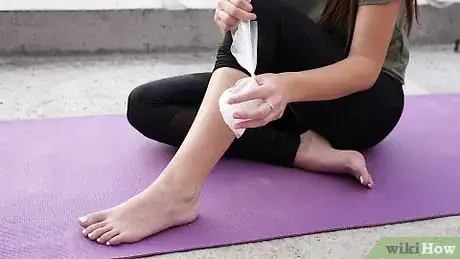
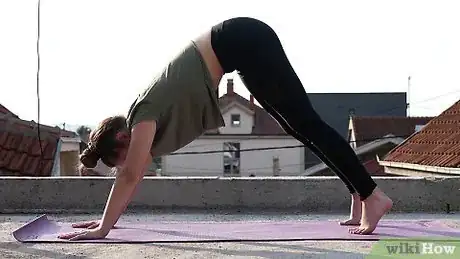
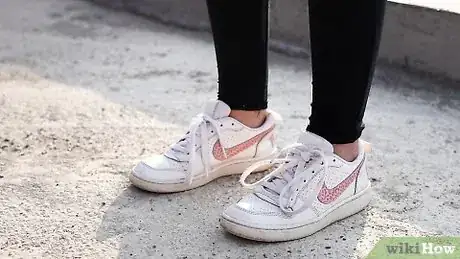
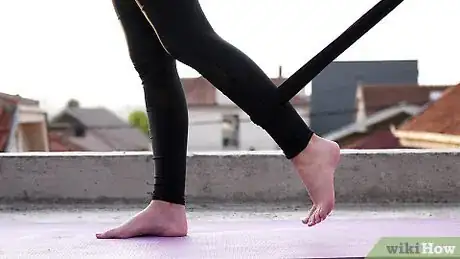
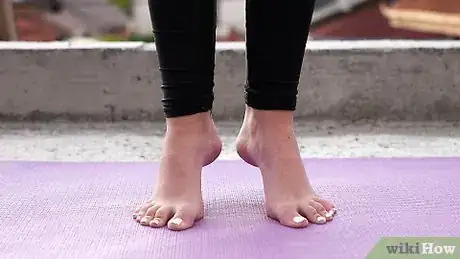
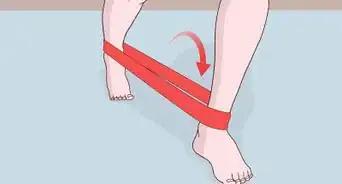
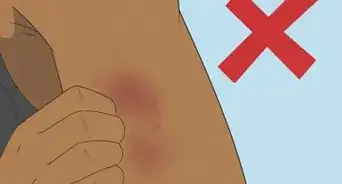
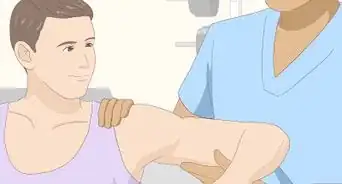
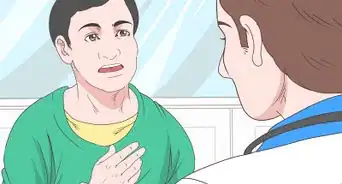
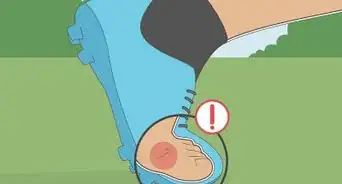
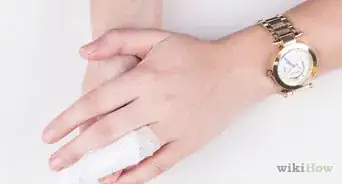
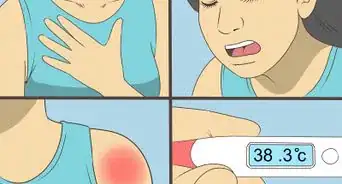
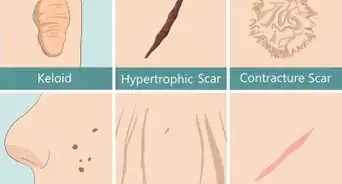
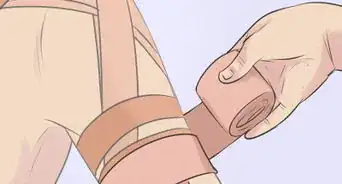
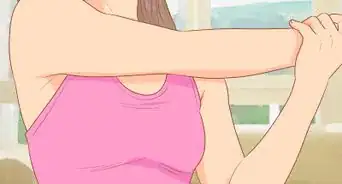
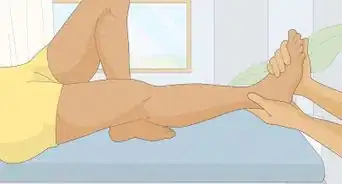
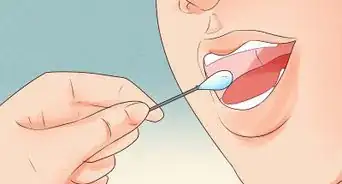










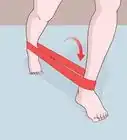
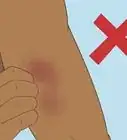
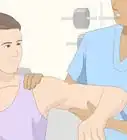
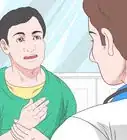




































Medical Disclaimer
The content of this article is not intended to be a substitute for professional medical advice, examination, diagnosis, or treatment. You should always contact your doctor or other qualified healthcare professional before starting, changing, or stopping any kind of health treatment.
Read More...